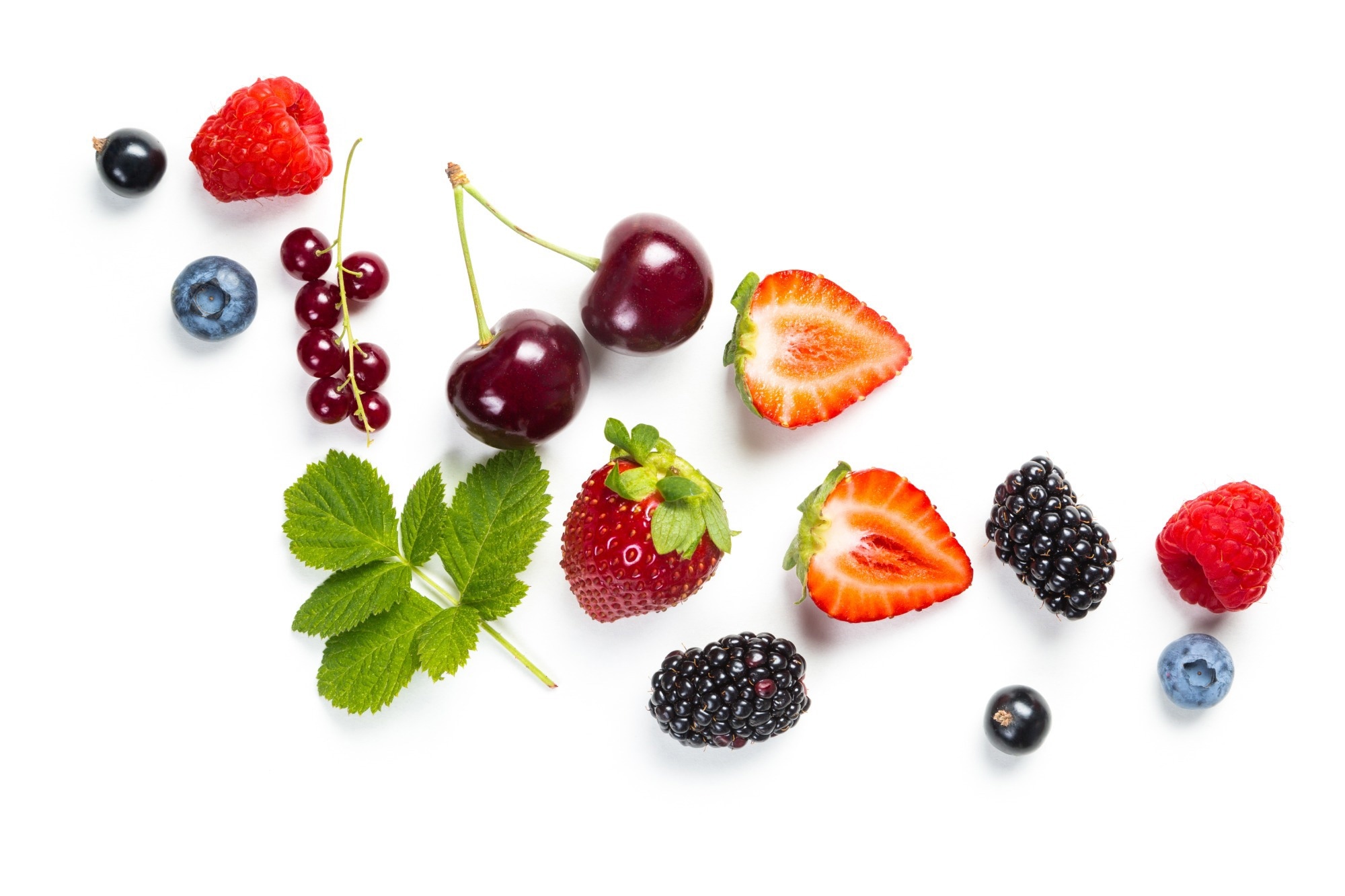Almost 19 million people die from heart attacks, strokes, arterial clots, and the like worldwide every year. These manifestations of cardiovascular disease (CVD) are primarily due to atherosclerosis or stiffening of the arteries. Atherosclerosis is recognized to be a lifestyle disorder, and a healthy diet can help to prevent it.
Including fresh fruits and vegetables in the diet is one way to increase their nutritive and non-nutritive benefits. A recent study in the journal Nutrients pooled data from multiple studies and clinical trials to investigate the effects of phenolic compounds in cherries and berries on cardiovascular health.
 Review: Phenolic Compounds from Cherries and Berries for Chronic Disease Management and Cardiovascular Risk Reduction. Image Credit: Oleksandra Naumenko / Shutterstock
Review: Phenolic Compounds from Cherries and Berries for Chronic Disease Management and Cardiovascular Risk Reduction. Image Credit: Oleksandra Naumenko / Shutterstock
Atherosclerosis is multifactorial in origin. Its multiple risk factors include high cholesterol levels, inflammatory stress, oxidative stress, smoking, age, hypertension, dyslipidemia, diabetes mellitus, and genetic factors. Unhealthy behaviors like smoking, a sedentary lifestyle, or a poor-quality diet are associated with CVD.
CVD risk is also higher in people with obesity, high blood sugar and cholesterol levels, and high blood pressure. The common risk factor for both is unhealthy lifestyle choices.
Globally, CVD management costs over $900 billion, as per 2015 statistics, and the burden is growing due to the increase in type 2 diabetes and hypertension at present. In turn, this emphasizes the need for lifestyle modification to prevent CVD.
Phenols in cherries and berries
Cherries and many berries are red, contain multiple nutrients, are low in fat, and provide fiber. They also boast a plethora of compounds, including many phenols, that affect the human body's biological processes. These bioactive compounds include flavonoids, stilbenes like resveratrol, and the phenolic acids hydroxycinnamic and hydroxybenzoic acids.
Berries contain flavonoids such as anthocyanins that make the fruit red. These compounds reduce oxidative stress and counter inflammatory activity. They also produce vasodilation, reduce blood sugar levels, prevent cancer, and have antimicrobial activity.
Cherries and berries may contain 200-300 mg polyphenols per 100 g fresh weight of fruit. These are thus on par with chocolate, dried peas, other legumes, and cereals. A healthy diet with plenty of fruits and vegetables provides about a gram of polyphenols per day.
Hydroxybenzoic acid gallic acid is abundant in sweet cherries, blackberries, blueberries, and raspberries. Flavonoids in berries and cherries, sweet or tart, and in many other berries, include catechin, epicatechin, and quercetin metabolites. Tannin levels are also high in many berries.
Previous research suggested that if these fruits were eaten regularly, these effects could prevent or counter inflammation and oxidative stress. The outcomes include lower blood pressure, improved cholesterol levels, and better endothelial function.
The current study sought to establish the value of berries and cherries for CVD prevention. The challenge was to make use of all available evidence and, if possible, to arrive at the best dosages.
What did the study show?
The researchers found that berry and cherry intake in obese rats caused blood vessels to relax, driving down the blood pressure. This was accompanied by endothelial protection via reduced serum endothelin, even as it triggered the production of more nitric oxide, a potent vasodilator. It also reduced oxidative damage to the endothelium, preventing inflammation that could drive atherosclerosis.
These effects could be due to the bioactives in these fruits, like quercetin, ferulic, caffeic, and gallic acid.
Improved microvascular function may follow higher berry and cherry intake since these are natural angiotensin-converting enzyme inhibitors (ACEIs). As such, their regular consumption might help avoid or reduce the use of synthetic ACEIs with their adverse effects.
Regular intake of berries and cherries also brought down inflammatory markers. In addition, the risk of obesity, and thus indirectly of CVD, dipped. Lipid markers also improved with the intake of cherries and berries. This could be because anthocyanins inhibit cholesterol synthesis and the cholesterol ester transfer protein that shifts cholesterol into atherosclerotic plaques.
The researchers also found that freeze-dried fruit powders are a "convenient and concentrated source of nutrients and phytochemicals" without loss of taste, color, or nutrition. This finding encourages the use of these potent fruits all year round by improving their shelf life while leaving their biological usefulness intact.
People who eat cherries and berries regularly also have a higher antioxidant capacity, resisting the damage caused by the constant production of oxidizing molecules during ordinary metabolism and inflammation. When coupled with a reduction in blood pressure, the outcome is a marked reduction in cardiometabolic risk. These effects are especially prominent in those already in poor health.
The optimal dosage remains uncertain, though earlier researchers have suggested up to 25,000 mg in mice. This dosage is specific to animal studies and not directly translatable to humans.
Up to two cups of these fruits are safe for daily consumption. Interestingly, this dose is equivalent to 50 g of blueberries, which agrees with the World Health Organization (WHO) recommendation of 400 g of fruits and vegetables per day.
Conclusions
Despite marked variations in the type and availability of different kinds of fruit consumed, the effects on CVD risk were clearly favorable. The kind of preparation, for example, fruit juice or freeze-dried preparations, was also relevant in determining the composition of bioactive compounds.
The investigators confirm that these fruits are indeed valuable in preventing CVD. Future research is essential to understand how and why this happens. Most importantly, public health scientists should convert the results into dietary and public health guidelines to boost fruit intake as part of a healthy diet designed to manage CVD.